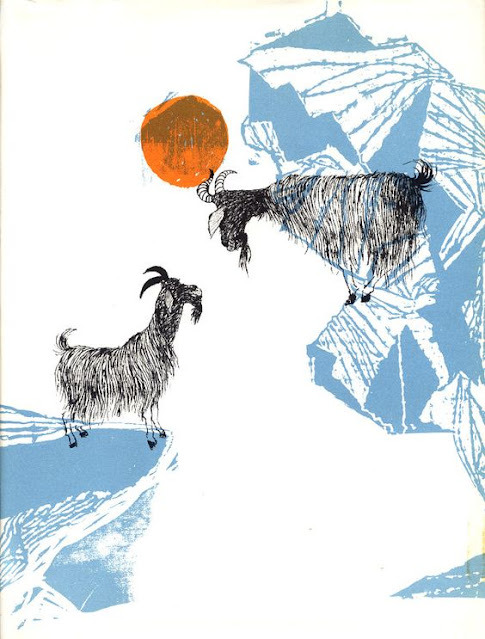#Evaline ness
Explore tagged Tumblr posts
Text
🧀✨ Happy National Cheese Day! ✨🧀
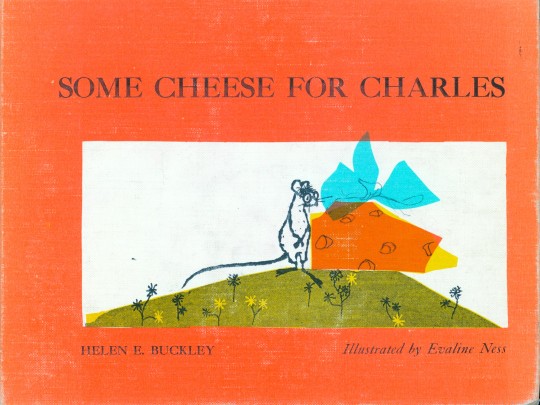
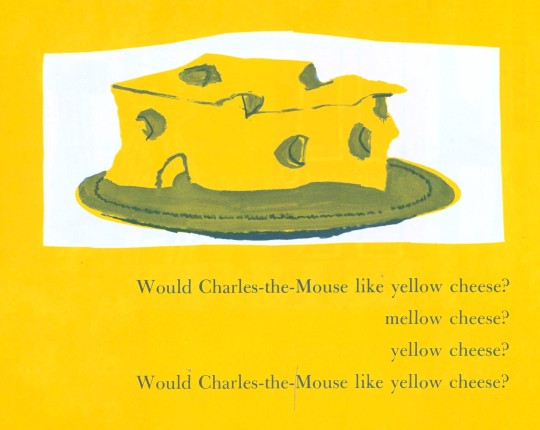
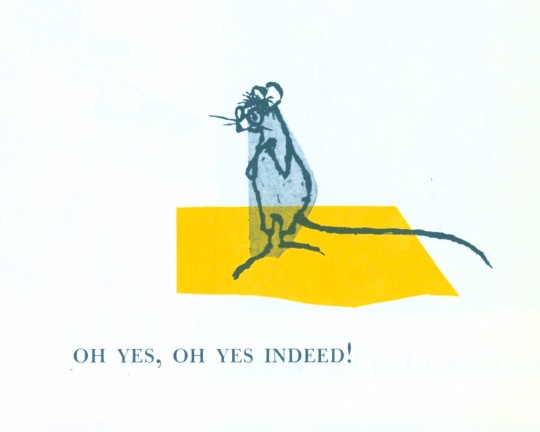
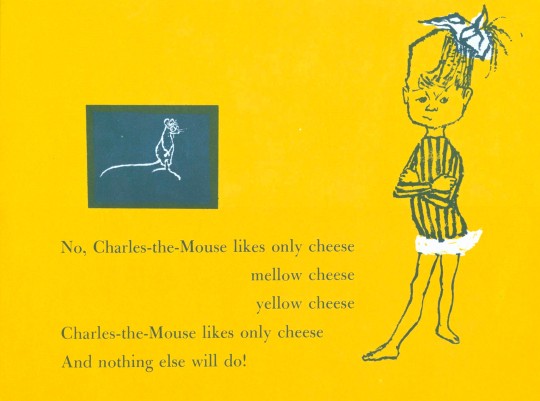

June 4 is National Cheese Day, so let’s take a moment to honor the cheddar, the brie, the gouda, the goat, the grilled, and the smoked. Whether you're into classic American slices or artisanal wedges, today is for the cheese lovers!
In Special Collections, we’re celebrating by sharing Some Cheese for Charles by Helen E. Buckley (1918-2001), a preschool and elementary school teacher. It was illustrated by Evaline Ness (1911-1986), a commercial artist, illustrator, and author of children's books. The book was published in New York by Lothrop, Lee & Shepard Co. in 1963.
Here’s a little cheesy knowledge for you:
Wisconsin produces more than 3 billion pounds of cheese a year. The oldest known cheese dates back 3,600 years (found in a Chinese tomb!) There’s an entire field of study called fromology — the science of cheese.
-View more from our Historical Curriculum Collection
-Melissa (thinks cheese is grate), Distinctive Collections Library Assistant
#national cheese day#some cheese for charles#helen e buckley#Evaline ness#Lothrop#Lothrop Lee & Shepard Co.#say cheese#fromage facts#cheesehead#cheesy#grilled cheese#cheese dip#cheese lovers#cheese curds
58 notes
·
View notes
Text

as I working on the underpainting for this post and slightly burning by retinas in the process, I was reminded a bit by the 70's Evaline Ness-esque picture books I read a bunch at the local library as a kid :')
but I wanted to play around with seeing how it would look as a old print -style book cover for one of my pdfs in my hoard and a journal article on the what Fougères was getting up to in the late 12th century seemed fitting~
Bachelier's full-text article is on ResearchGate if you wanna read it
#twelfth century#it was between this one and Nicholas Vincent's Twyford Under the Bretons- also v good btw#this is mostly me futzing around before rendering but i'll put in my art tag nonetheless:#shakespeareomnibus
7 notes
·
View notes
Text
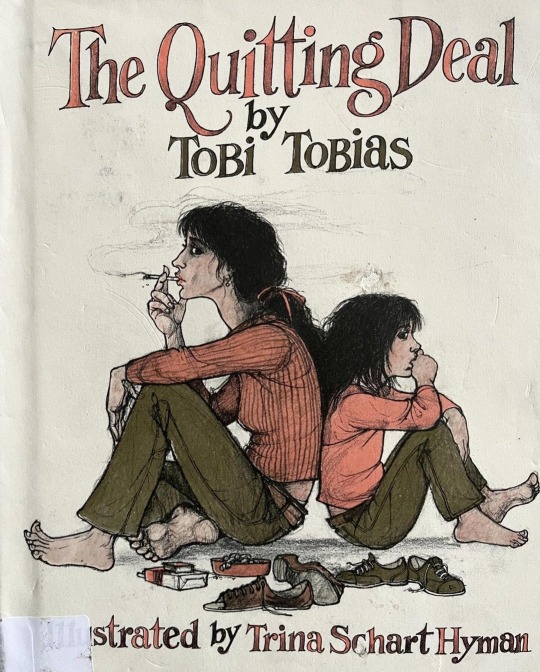
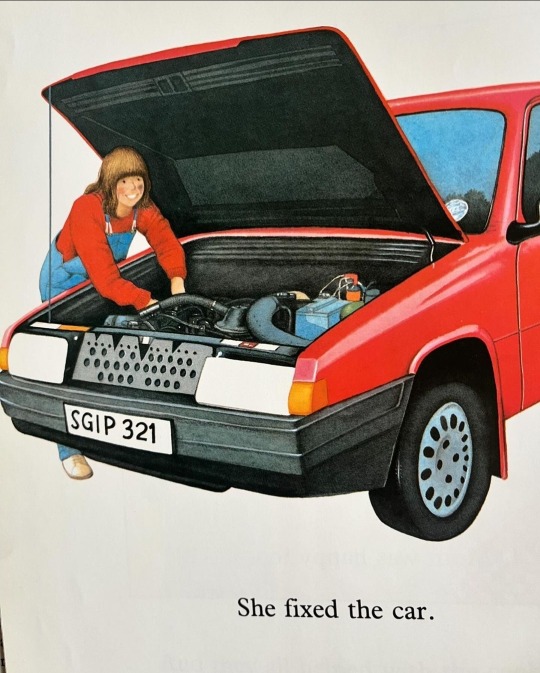
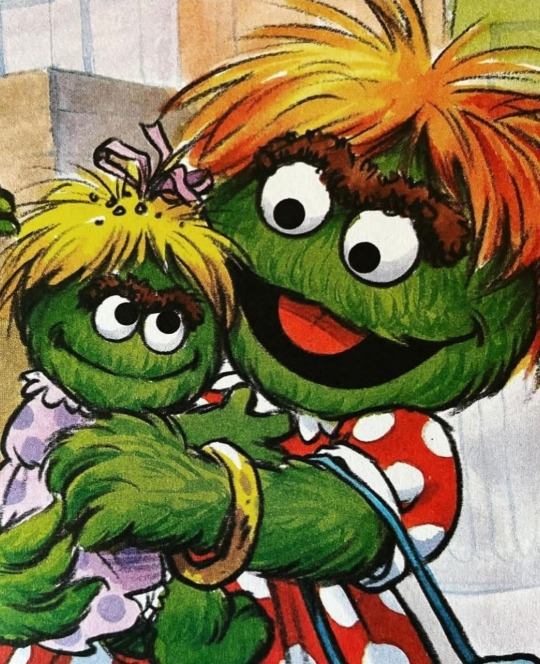
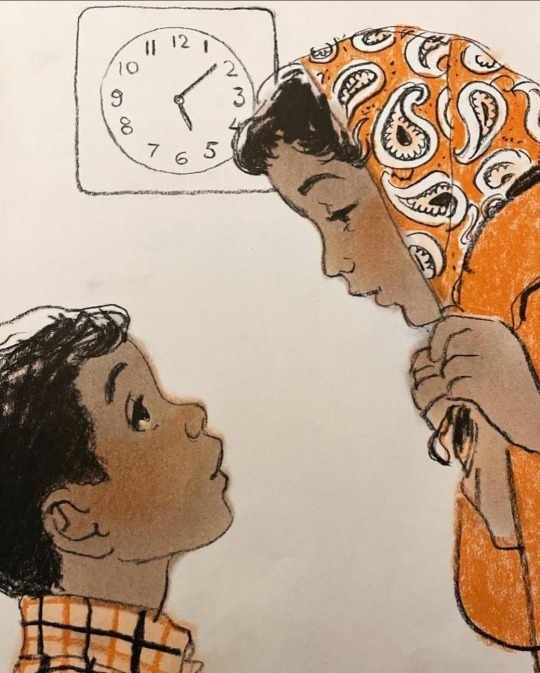
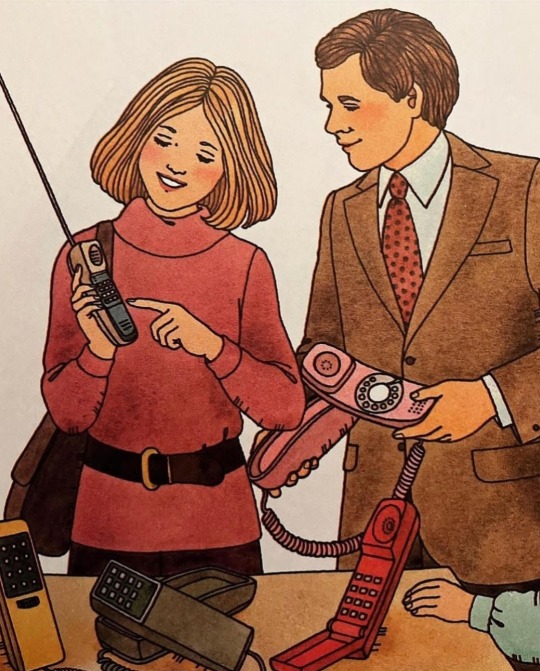
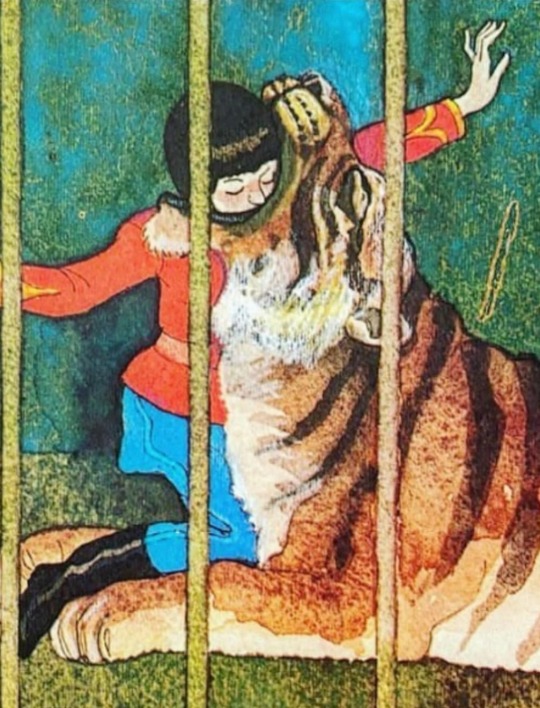
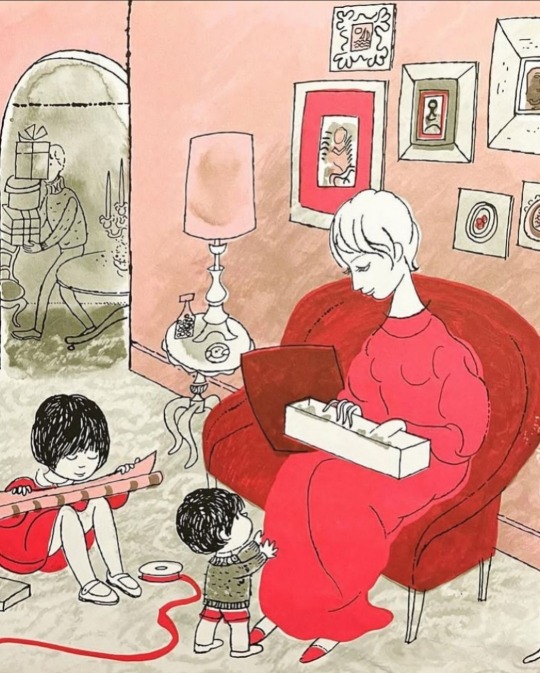
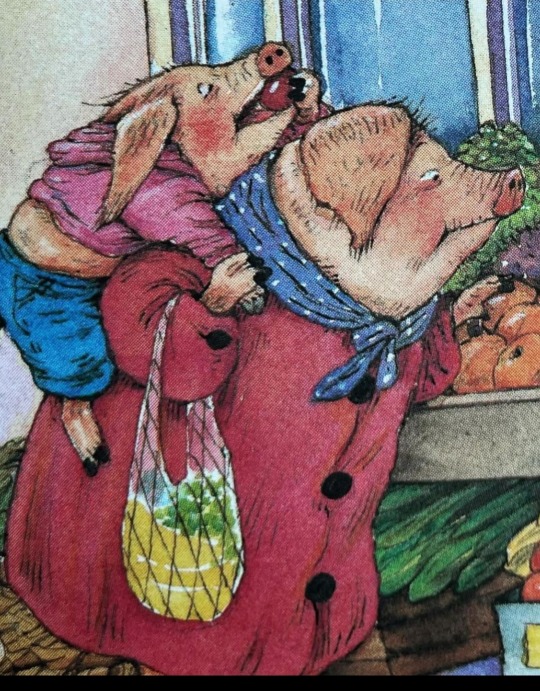
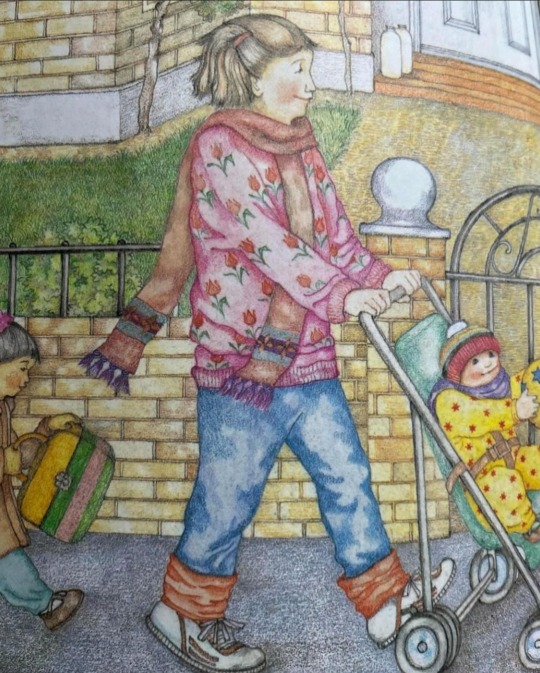
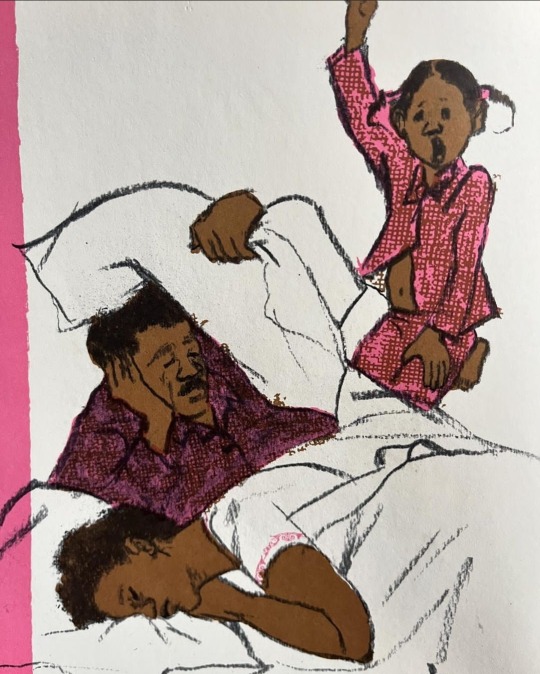
Illustrated by:
1. Trina Schart Hyman 2. Anthony Browne
3. Tom Brannon 4. Brinton Turkle
5. Maida Silverman 6. Joe Lasker
7. Aliki Brandenburg 8. Lynn Munsinger
9. Ann Dalton 10. Evaline Ness
via @aimeehagertyjohnson on IG
7 notes
·
View notes
Text
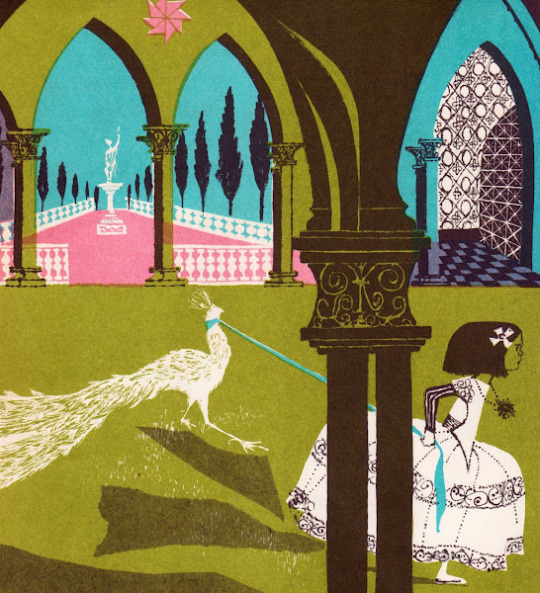
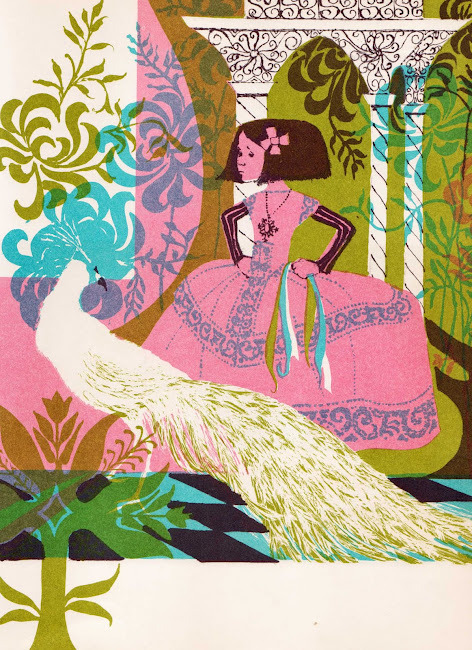
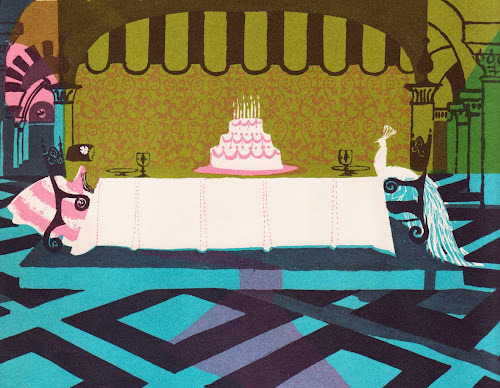
Pavo and the Princess, Evaline Ness
9 notes
·
View notes
Text
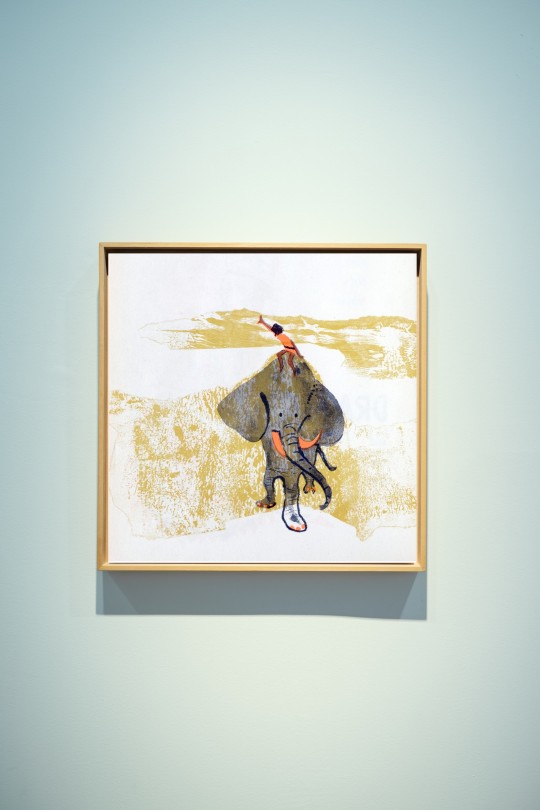
Evaline Ness, Lonely Maria
3 notes
·
View notes
Text
Professional Character/Concept Illustrations
Since Animayo centers not only characters but also a clear and creative sense of place for them to exist in, thought that maybe looking into different concept artists and vis dev work would help me understand how to go about the process of creating an illustration that conveys story, worldbuilding, and characters.
Evaline Ness – she was an illustrator who studied painting at the art institute of Chicago and also did some cool funky commercial work. e.g: 1950s Good Housekeeping; she kept it really loose and painterly. She’s also known for her mixed media approach to children’s books. She used wood cuts and wood prints, silk screens and rubbings. Just a skillful mix of textres from different printing and drawing techniques. She would work in the text into her illustrations and just add so much energy to the whole thing. She created the art for the black cauldron.
Eyvind Earl did a lot of concept art for Disney. Known for his work on Lady and the Tramp and Sleeping Beauty. There was a sense of romanticism to his use of textures, colours, and lines. The drama of his paintings on sleeping beauty especially felt unreal. What really makes his work for me is the ability to synthesize different influences. He was looking at a lot of medieval illuminated manuscripts and tapestries and how they dealt with space and colour. Pre-renaissance art has this way of breaking things down into their iconic shapes and foregoing notions of shading and perspective. And you can really see how he found the link between that medieval style and the modern painting techniques that he was schooled in. The end result is this absolute visual feast for the eyes.
Claire Keane – she did the concept art for frozen. Disney had been wanting to make a Snow Queen adaptation for decades, but they could never really figure out how to get this odd old fairytale to be relevant to the modern day. Enter Claire Keane; if you look at her concept art you can see glimpses into the different things they were trying out. I personally really enjoyed her character concepts where, for example, the ice queen is this Cruella de Vil type villain. I especially loved her costume design for this concept. I believe at one point they were considering Bette Midler for the voice of Elsa, and you can see how that influenced her character design. The artwork after the team decided the two girls were going to be sisters is a lot more compelling. Theres a bunch where Elsa has so much attitude and spunk. They explored versions of her that were moody and thus costumed her in alternative subculture styles. There’s also some concept art that are hauntingly sad. Theres also several variations on what their childhood was like; and you can see that through how they also push the style in different kinds of ways. I especially loved Keane’s concept art where she really makes use of patterns and distorts the space in this modernist way.
Keane also worked on the visual development for Tangled. Immediately you can see just the atmosphere she created. You can see how her soft lighting and lived in look carried over to the final film. I love the loose personality of some of them and just how the line quality plays up this idea of a tangled mass of hair.
This village sketch in particular is so charming. Not only did Keane develop the art style for Rapunzel, she also developed Rapunzel’s art style. Theres so many layers of expression between designing a character and designing something that the character designed.
Furthermore, Keane came at this project from every angle; she used storybook art styles, she used ink, she used oil paint, and many more. Some of my personal favourites are the pieces that include this dreamy light that you can recognise from the final film, with some of them having a little bit of a more ominous edge to them.
What did I learn from Claire Keane? Explore different visual styles and concepts. Don’t be tied down to one specific visual language or character design. Also, the way you construct your character also has an effect on their costuming. Furthermore, be open to exploring alternate character relationships. Lastly, draw inspiration from different art movements and experiment with styles.
Mary Blaire – she was an artist for Disney who was known for her vivid colours. How did she develop these colour palettes? The answer involves global politics, Franklin D. Roosevelt, and llamas. Earlier in her career, Blaire’s watercolour paintings looked more like the ones below. There’s this cohesive California lighting going on. So then how did she move from this to her work in Alice in Wonderland for example? In the years leading up to World War II, Roosevelt wanted to solidify the US’s relationships with the countries of Latin America. Roosevelt chose Walt Disney to be the cultural ambassador and go on this tour of a number of Latin American countries. Walt, with his group of animators and illustrators, packed their bags and went to Mexico, Peru, Argentina, Chile, and more. All the while, Blaire is painting what she sees. Her friends and colleagues describe this almost as an epiphany for her; not only in terms of subject matter but also in technique. She started experimenting with patterns and colour combinations. The abstraction, composition, and colours are something that carried through the rest of her career. Not only was that trip direct research for pieces such as The Three Caballeros, but it also changed the way that she made art.
Its almost impossible to talk about art is Disney without mentioning Mary Blaire. Her use of colour, flatness, and pattern was what took Disney from their pre-war aesthetic and pushed it into modernism. Early Disney animators were very much brought up in the school of illustration’s golden age. Concept art for Snow White, Pinocchio, and Bambi, were very beautiful and very grounded in perspective, anatomy, line work, and all the other traditional techniques of art. When they started working on Cinderella – the first big princess movie since Snow White – Blaire brings in a completely new colour direction. This is a huge shift from where they were with movies such as Bambi. She brought in colour and folk art patterns to the forefront of her work. Furthermore, rather than focusing on this illusionistic perspective, all of her work was much more interested in showing the interplay of colour and flatness, as well as breaking shapes down to just their core elements. Her modern use of shape and colour is absolutely stunning. She even proudly mentioned once that “Walt said [she] knew about colors he had never heard of before,”. Even looking some of the final interiors for Cinderella, we can see her influence shining through; they were a fwr cry from the interiors in pieces such as Pinocchio. By the ‘60s Blaire was working on It’s a Small World in Disneyland, and its very clear that her influence was enormous.
What can I take away from this? Draw inspiration from real life, put emphasis and deliberation on your use of colour and composition.
Shelia Beckett – a fairy tale illustrator who has done work in advertising. She’s explored many styles and mediums from pencil drawings, to watercolour, to marker pieces, and much more. She pushes her style in different ways which is evident in her portfolio. She has an amazing grasp on costume and character which I believe you can see best in her illustrative work for Snow White and Rose Red. Additionally, she’s a master of composition, which you can see in her illustrations for a Hansel and Gretel book. In her 90s she did a lot of digital work, and you can see how she builds on all those techniques (e.g.: her use of patterns, her composition and movement).
0 notes
Text
The copies I read were a combo of these covers (i was also obsessed with that image of the horned king) which I think were the ones my school library had, and Evaline Ness's beautiful versions, which my mom had copies of—The Black Cauldron's depictions of Orddu, Orwen, and Orgoch being my favorite.





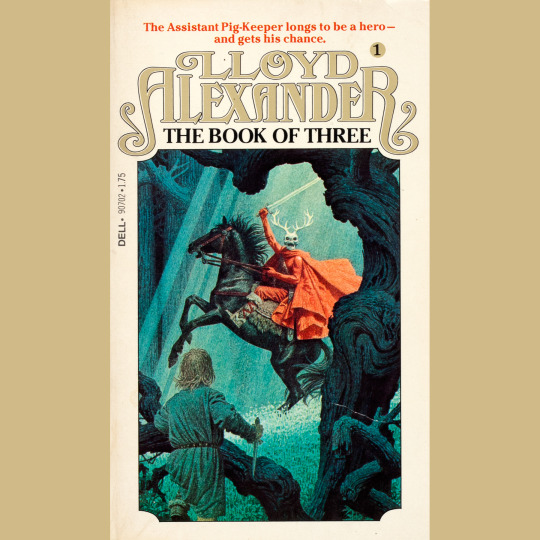
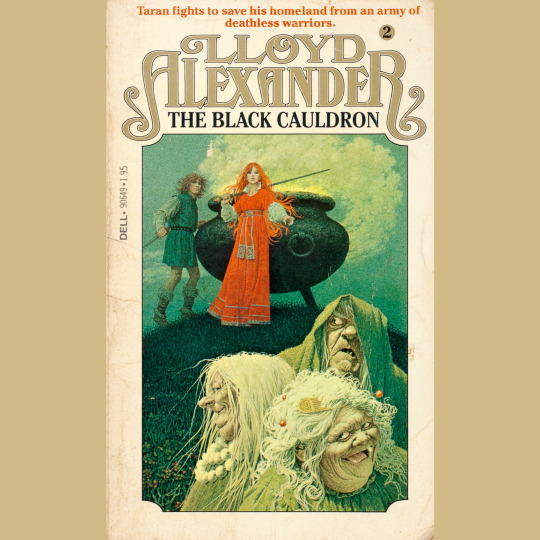
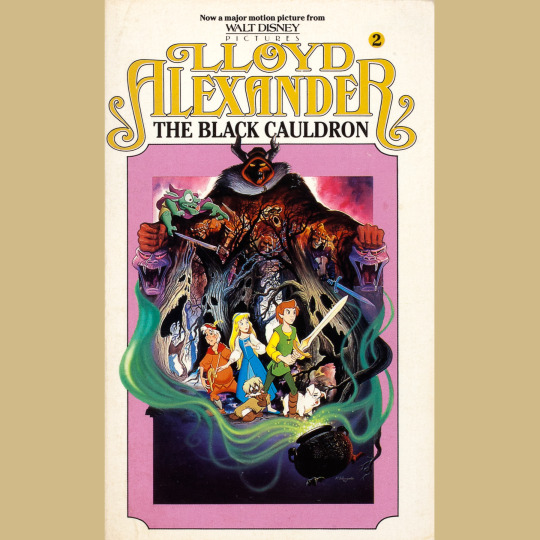
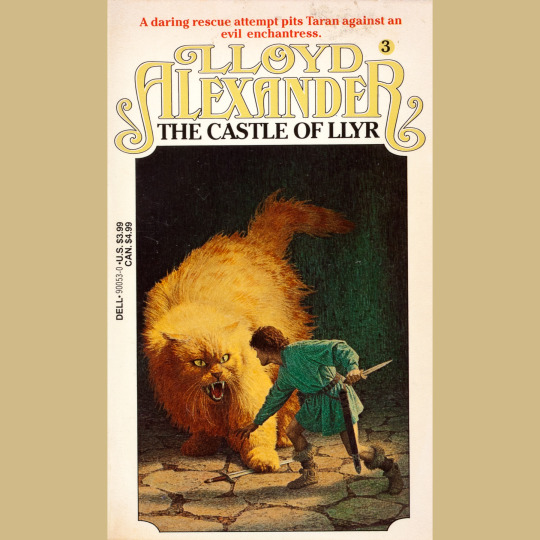

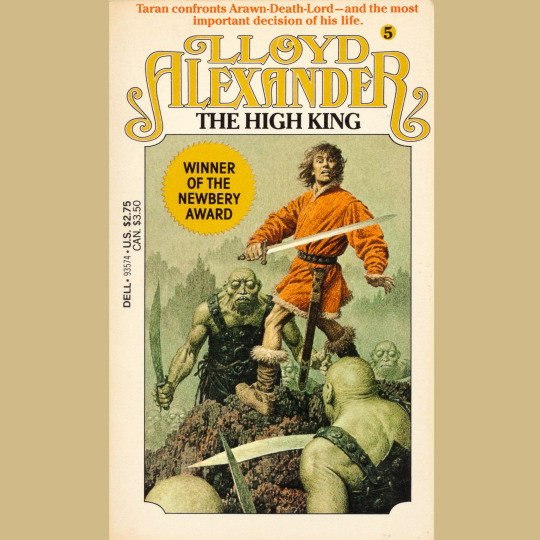
The five-volume Chronicles of Prydain, by Lloyd Alexander, began in 1964 with The Book of Three, and saw new entries — The Black Cauldron, The Castle of Llyr, Taran Wanderer — appear annually until finishing with The High King in 1968. They’re set in a fantasy version of Wales, and draw from Welsh mythology, but the story is very much the tale of an assistant pig-keeper named Taran who, as he grows from boy to man, seeks adventure, finds responsibility and learns the terrible cost of glory. It’s one of the first works of fantasy I read as a kid and honestly, I don’t think any others, except Earthsea, have measured up in terms of emotional weight (and their refusal to indulge in power fantasy or other cliché). I re-read them recently and that remains true. You ought to read them if you haven’t. They’ll change you, I bet.
Anyway. My editions as a kid were the ‘80s Dell Yearlings with the gorgeous cover art by Jean-Leon Huens. I have a deep love for the first cover and its depiction of the Horned King (and am eternally jealous that Tony DiTerlizzi owns the original). The others are pretty great, too. I love that the giant cat is basically a house cat and I love those alien-looking Cauldronborn on the final book’s cover. The Black Cauldron cover is rather new for me; my original had the movie poster for the god awful Disney movie (beautiful, yes, but still awful and utterly lacking the emotional heart of the books). I’m pleased Huens shows Eilonwy, but now I am a little bummed he never painted the bard, Fflewddur Fflam.
565 notes
·
View notes
Note
Who's your influences? Your art reminds me of somebody's art but I can't place it!
Oh man, too many to name.
Some big ones in no particular order: Angus McBride, Tony DiTerlizzi, The Brothers Hildebrandt, Kamome Shirahama, Alvaro Tapia, Ryoko Kui, Jan Popisil, Jesper Ejsing, Daniel Schaffer, Karl Kopinski, Alan Lee, John Howe, Larry MacDougall, Matt Rockefeller, Xanthe Bouma, Omar Rayyan, Troy Howell, Howard Pyle, NC Wyeth, Hayao Miyazaki, Hitoshi Iwaaki, Evyn Fong, Kev Walker, Paul Bonner, Paul Dainton, JRR Tolkien, Wayne Reynolds, Dave Gallagher, Ralph Horsley, Mark Stacey, Sam Bosma, Akihiko Yoshida, Ryoma Ito, Peter De Seve, Evaline Ness, Steve Prescott, James Gurney, Steve Belledin, Eoghan Kerrigan, Gary Chalk, Justin Gerard, Keith Parkinson, Jody Lee, Todd Lockwood, Victor Ambrus, Lauren Pettapiece, Arthur Rackham, Dean Morrissey, Pauline Baynes
Almost certainly a bunch of animators, picture book, comic, and game artists I’m forgetting…
Also my wife Patti Pogodzinski. Our work’s very different but I rely a lot on her taste
1 note
·
View note
Text
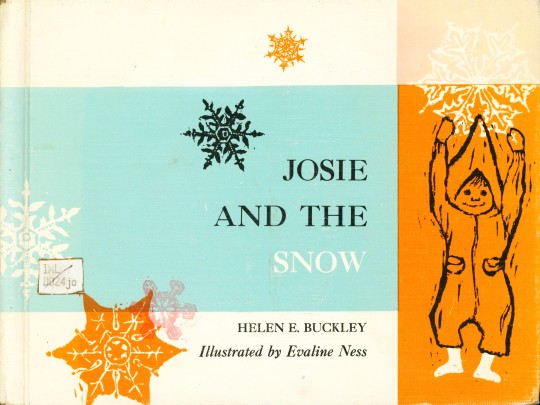
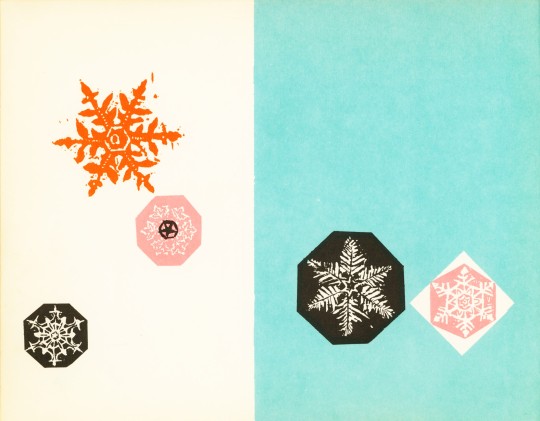
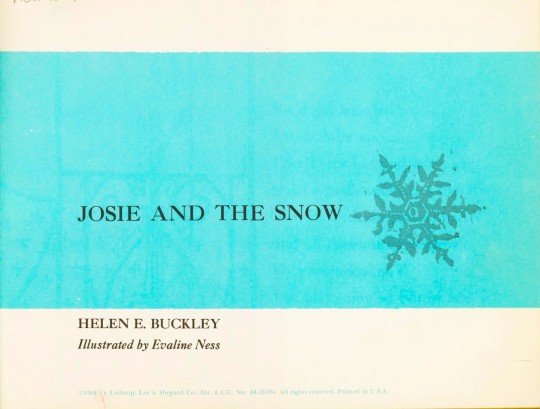

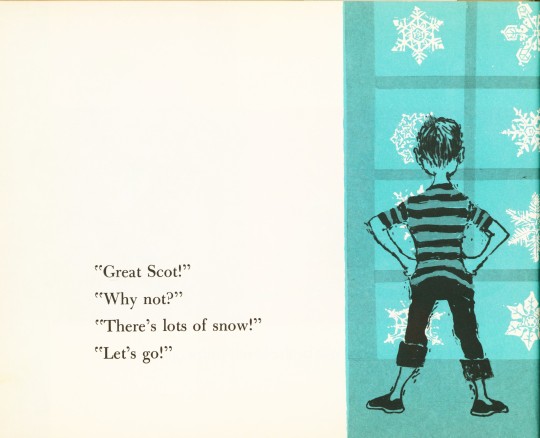
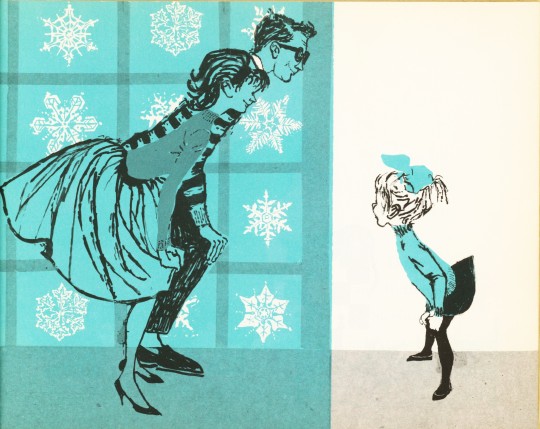
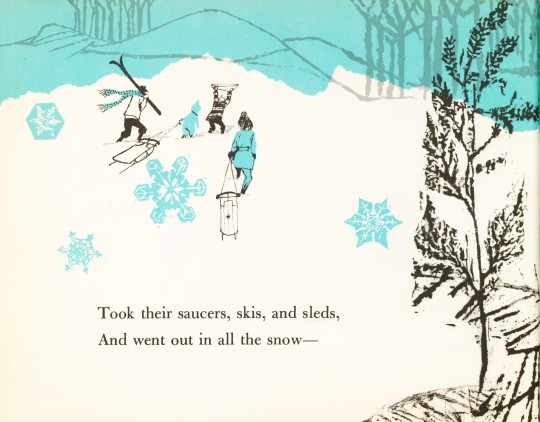
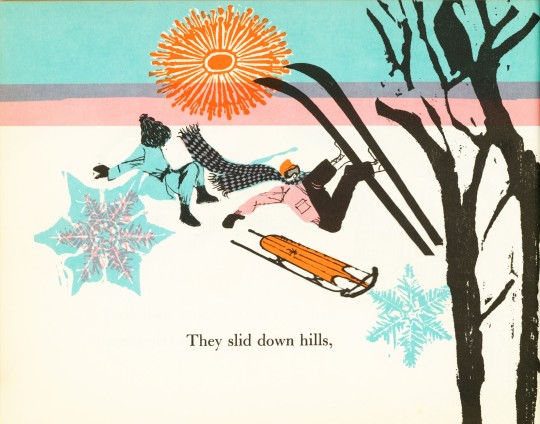
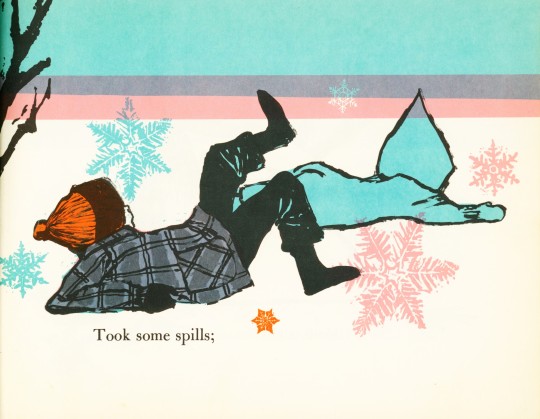
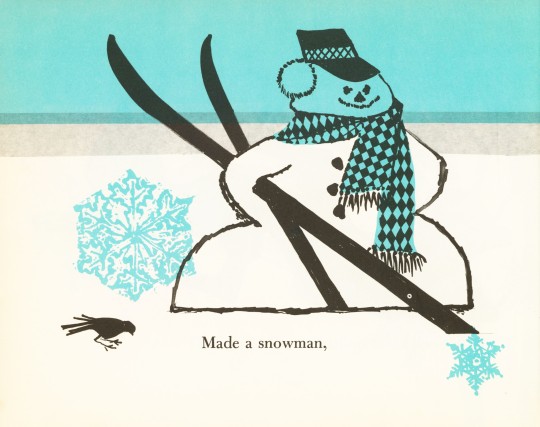



SNOW DAY!
Because of inclement winter weather, Special Collections, along with the rest of the university, will be closed today. Some of us will be working from home, while others might use this opportunity to take a snow day and enjoy the time off (although to be honest it looks pretty bleak out there right now). Nevertheless, with the expectation that it might turn into a full-on winter wonderland, we offer this children's book from our Historical Curriculum Collection: Josie and the Snow by American educator and children's author Helen E. Buckley (1918-2001), with Illustrations by American artist Evaline Ness (1911-1986), published in New York by Lothrop, Lee & Shepard Co. in 1964.
Buckley's story is pleasantly simple: a family's day-long rollick in the snow. Ness matches this simplicity with illustrations informed by her career in commercial artwork. Helen Buckley began her career as an elementary school teacher, earned a doctorate in education from Columbia University, and was an English professor at the State University College of New York at Oswego when she wrote this book.
After a long career as a fashion illustrator and model, Evaline Ness began illustrating children's books in 1951. She was at the height of her children's illustration career when she illustrated Jose and the Snow, receiving Caldecott Honors in 1964, 1965, and 1966, and finally receiving the 1967 Caldecott Medal for her own book, Sam, Bangs & Moonshine. The name "Ness" might sound familiar, as she had a colorful, 5-year marriage to Eliot Ness of "The Untouchables" fame.
View a post from a previous Snow Day.
#Snow Day!#snow day#snow#Josie and the Snow#Helen E. Buckley#Evaline Ness#Lothrop#Lee & Shepard Co.#children's books#picture books#Historical Curriculum Collection
54 notes
·
View notes
Photo
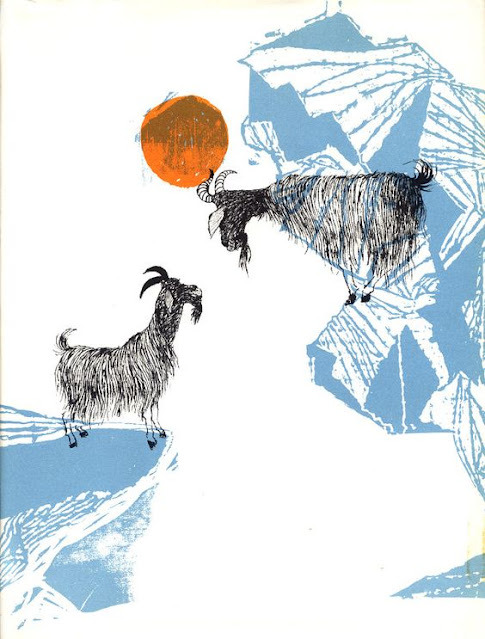
EVALINE NESS b.1911 painter, illustrator
153 notes
·
View notes
Text
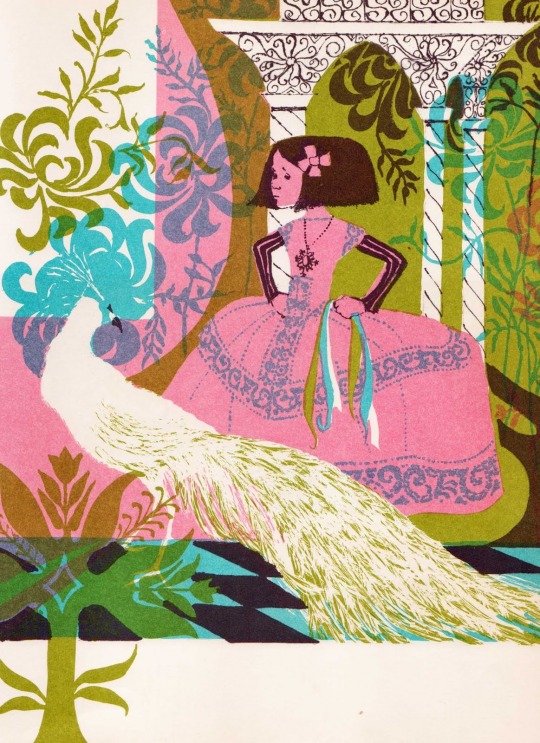
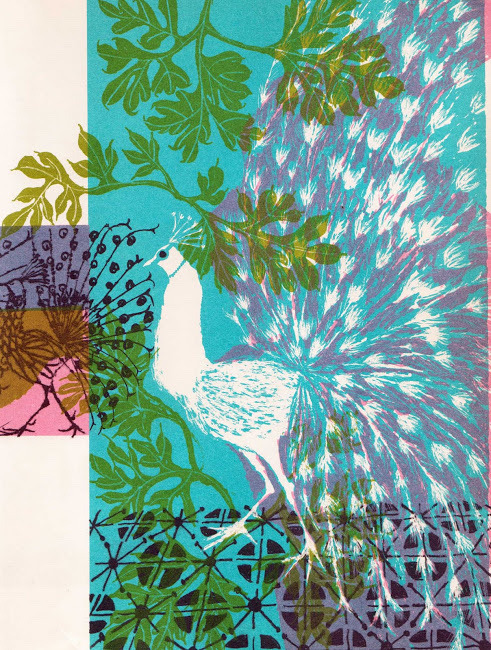
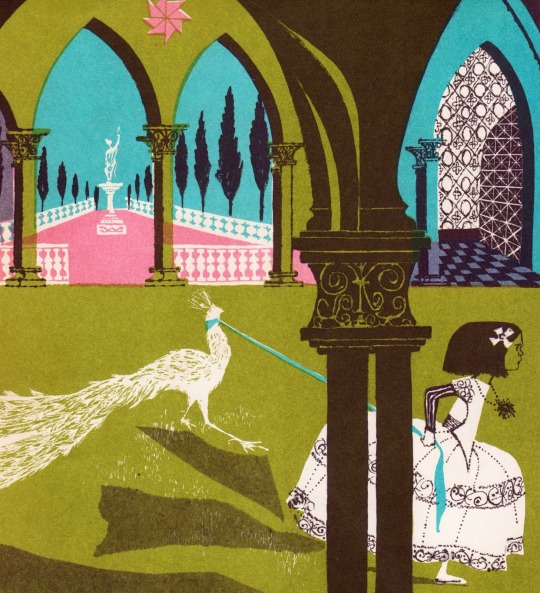
Illustrations by Evaline Ness for PAVO AND THE PRINCESS (1964).
#art#vintage#illustration#children’s illustration#children’s books#1960s#60s#evaline ness#illustrationd#illustrations
1K notes
·
View notes
Photo
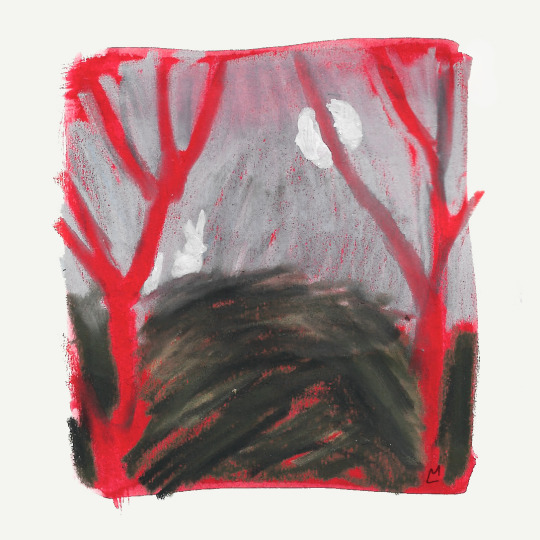
“If all you young men were hares on the mountain, how many young girls would take guns and go huntin’?” (x)
i have so much homework to do so the rational thing to do is of course make a small vent piece inspired by Evaine Ness’ style and a Shirley Collins song.
#illustration#red#black and white#gouache#crayons#neocolor ii#hare#forest#trees#illustrators on tumblr#traditional art#sketch#artists on tumblr#art#folk song#shirley collins#evaline ness
9 notes
·
View notes
Photo
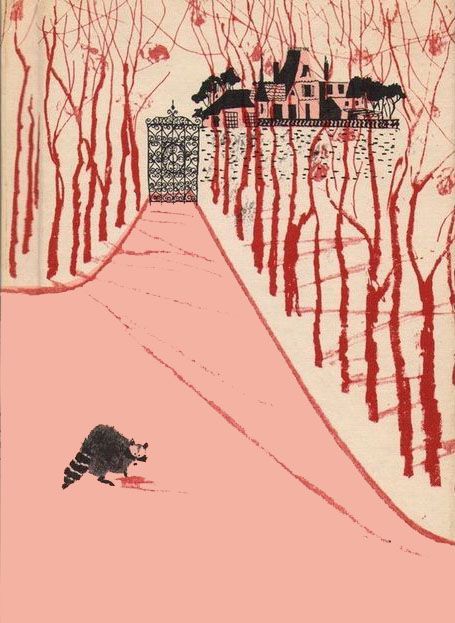
Macaroon by Julie Cunningham
illustration by Evaline Ness,1962
42 notes
·
View notes
